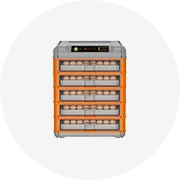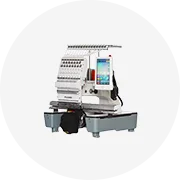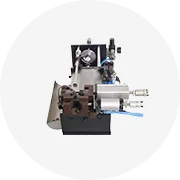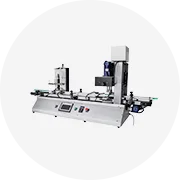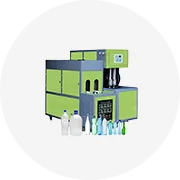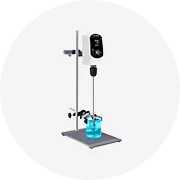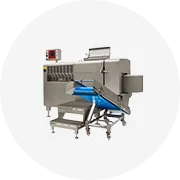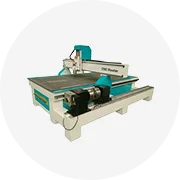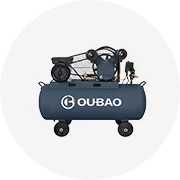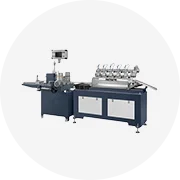Types of Cummins CM850 ECM
The Cummins CM850 ECM (Electronic Control Module) is a sophisticated digital control system designed for diesel engines. It continuously monitors engine sensors, processes information, and adjusts critical parameters to optimize performance, fuel efficiency, and emissions control. This advanced system forms the brain of modern Cummins diesel engines, available in several specialized variants:
Cummins ISX CM850
An advanced control system primarily deployed in heavy-duty trucks and commercial vehicles. This ECM precisely manages fuel injection timing, air-to-fuel ratios, and ignition parameters to deliver optimal performance under varying conditions.
Best for: Long-haul transportation, commercial fleets, heavy-duty applications
Key feature: Real-time adaptation to driving conditions while maintaining emissions compliance
Cummins QSM CM850
Engineered for high-performance industrial engines, this variant excels in demanding applications. It monitors and controls critical engine parameters to deliver consistent power while optimizing fuel consumption.
Best for: Industrial equipment, construction machinery, marine applications
Key feature: Enhanced durability for continuous operation in harsh environments
Cummins ISL CM850
Designed specifically for medium-duty vehicles and buses, this ECM variant balances power delivery with efficiency. It interfaces with multiple vehicle systems to ensure optimal operation across varying urban driving conditions.
Best for: Transit buses, delivery vehicles, medium-duty applications
Key feature: Optimized for frequent stop-start cycles and variable loads
| ECM Type | Primary Applications | Key Capabilities | Compatibility |
|---|---|---|---|
| ISX CM850 | Heavy-duty trucks, commercial transportation | Advanced fuel mapping, highway optimization | Cummins ISX engines (11-15L) |
| QSM CM850 | Industrial machinery, construction equipment | Durability in harsh conditions, torque management | Cummins QSM engines (8-12L) |
| ISL CM850 | Buses, medium-duty vehicles | Urban cycle optimization, emissions focus | Cummins ISL engines (8.9L) |
Expert Tip: When replacing a CM850 ECM, always verify the exact part number compatibility with your specific engine model and calibration requirements. Using an incorrect ECM variant can result in performance issues, increased emissions, or potential engine damage.
Specifications & Technical Details
The Cummins CM850 ECM incorporates advanced technology to deliver precise engine control. Understanding its technical specifications is essential for proper selection, maintenance, and troubleshooting.
Equipped with a high-performance CPU that processes extensive sensor data in real-time. Features sufficient memory capacity for storing engine parameters, fault codes, and operational data. Includes multiple I/O interfaces for comprehensive engine monitoring and control.
Compatible with both 12V and 24V vehicle electrical systems. Incorporates an integrated voltage regulator to maintain stable power during fluctuations. Protected against reverse polarity and voltage spikes for enhanced durability in harsh environments.
Features Controller Area Network (CAN) bus for engine system communications. Includes Chassis Area Network for vehicle body system integration. Equipped with Data Highway (DH) ports for diagnostic tools and external device connectivity.
Processes signals from Mass Air Flow (MAF), Throttle Position (TP), Crankshaft Position (CKP), Camshaft Position (CPS), and Engine Coolant Temperature (ECT) sensors. Monitors additional inputs including ambient conditions and driver commands.
Controls fuel injectors with precise timing and quantity adjustments. Manages Ignition Timing (IT) and Variable Geometry Turbocharger (VGT) systems. Regulates Exhaust Gas Recirculation (EGR), Wastegate actuators, and cooling fans based on operational requirements.
Implements sophisticated processing logic to optimize engine performance across varying conditions. Balances power output, fuel efficiency, and emissions control. Adapts to different driving conditions, loads, and environmental factors in real-time.
Performs continuous self-diagnostic testing of engine components and systems. Records Diagnostic Trouble Codes (DTCs) when faults are detected. Provides detailed operational data for preventive maintenance and troubleshooting.
Manages Exhaust Gas Recirculation (EGR) to reduce NOx emissions. Controls Selective Catalytic Reduction (SCR) systems using urea injection. Oversees Diesel Particulate Filter (DPF) regeneration cycles to reduce particulate emissions.
Technical Note: The CM850 platform represents a significant advancement in engine control technology, offering faster processing speeds and more precise control compared to earlier Cummins ECM versions. Its architecture supports multiple calibrations that can be tailored to specific operational requirements.
Maintenance Requirements
Proper maintenance of the Cummins CM850 ECM is essential for ensuring reliable engine performance and longevity. Follow these maintenance guidelines to keep your ECM functioning optimally:
| Maintenance Task | Frequency | Importance | Notes |
|---|---|---|---|
| Electrical Connection Inspection | Monthly | Critical | Check for corrosion, looseness, and proper seating of all connectors |
| Software Updates | Semi-annually | High | Install latest calibrations from Cummins to address known issues |
| Cooling System Check | Quarterly | High | Verify proper coolant levels and absence of leaks near ECM |
| Diagnostic System Check | Quarterly | Medium | Use Insite or Calterm to verify system operations |
| Emissions System Inspection | Per regulatory schedule | High | Ensure EGR, SCR, and DPF systems function properly |
| Wiring Harness Inspection | Every 6 months | Medium | Check for chafing, damage, or improper routing |
| Parameter Verification | After repairs or annually | Medium | Confirm ECM parameters match engine specifications |
Warning: Never disconnect the ECM while the engine is running or when the ignition is in the "ON" position. Doing so can damage the controller and potentially lead to expensive repairs. Always disconnect the battery before performing any maintenance on the ECM or its connections.
Preventive Maintenance Benefits
- Extended ECM and engine life
- Reduced unexpected downtime
- Improved fuel efficiency
- Consistent engine performance
- Lower overall maintenance costs
Signs of ECM Issues
- Check engine light illumination
- Irregular engine performance
- Hard starting or no-start conditions
- Unexpected shifts in transmission
- Poor fuel economy
- Increased emissions
Professional Advice: Consider scheduling annual ECM diagnostics with a certified Cummins technician. They can perform comprehensive testing beyond basic maintenance checks, including verification of sensor calibrations and advanced parameter testing that requires specialized equipment.
How to Choose the Right Cummins CM850 ECM
Selecting the appropriate Cummins CM850 ECM requires careful consideration of multiple factors to ensure compatibility and optimal performance. Follow this comprehensive selection guide to make an informed decision:
Application Assessment
Begin by thoroughly analyzing your specific application requirements. Consider the operating environment, duty cycle, and performance expectations. The ECM must align with the intended use case, whether it's for heavy-duty transportation, construction equipment, or power generation.
Key consideration: Operating conditions and duty cycle demands
Compatibility Verification
Confirm exact compatibility with your engine model, year, and emissions certification level. Check the Cummins part number and cross-reference it with your engine's specifications. Incompatible ECMs may cause performance issues or fail to function entirely.
Key consideration: Engine serial number and calibration requirements
| Selection Factor | Importance | Considerations |
|---|---|---|
| Engine Compatibility | Critical | Match ECM to specific engine model, displacement, and emissions tier |
| Performance Requirements | High | Consider power needs, fuel efficiency targets, and operating conditions |
| Features & Capabilities | Medium | Evaluate diagnostic functions, data logging, and additional features |
| Warranty & Support | High | Assess warranty coverage and availability of technical support |
| Quality & Reliability | Critical | Choose genuine Cummins parts or authorized remanufactured units |
| Cost-Effectiveness | Medium | Balance initial cost with long-term reliability and performance |
| Software Compatibility | High | Ensure compatibility with required diagnostic tools and software |
Procurement Advice: When sourcing a replacement CM850 ECM, consider authorized Cummins remanufactured units as a cost-effective alternative to new components. These undergo rigorous testing and updating to the latest specifications, often carrying warranties comparable to new parts at a reduced cost.
Important: Be wary of aftermarket "performance" ECMs that claim significant power increases. While legitimate tuning options exist, unauthorized modifications can void warranties, compromise emissions compliance, and potentially cause engine damage. Always consult with a certified Cummins technician before making performance modifications.
DIY Replacement Guide
Replacing a Cummins CM850 ECM requires technical knowledge and careful handling. While professional assistance is recommended, experienced technicians may perform this procedure following these guidelines:
Caution: ECM replacement should ideally be performed by certified technicians. Improper installation can damage components, void warranties, and potentially create safety hazards. Proceed with DIY replacement only if you have appropriate technical expertise.
Required Tools
Replacement Procedure
Park the vehicle on level ground and allow the engine to cool completely. Disconnect all battery power to prevent electrical shorts. Wear an anti-static wrist strap to prevent static discharge damage to sensitive electronics.
The CM850 ECM is typically mounted in the engine compartment, though location varies by vehicle model. Consult your service manual for the exact location. Remove any protective covers or shields to access the ECM.
Carefully disconnect all electrical connectors from the ECM. Note the position and orientation of each connector. Some may have locking tabs that must be released before removal. Label connectors if necessary to ensure correct reconnection.
Using appropriate tools, remove the mounting bolts or brackets securing the ECM. Keep hardware organized for reinstallation. Support the ECM as you remove the final fasteners to prevent it from falling.
Position the replacement ECM in the mounting location. Reinstall mounting hardware and tighten to manufacturer specifications using a torque wrench. Apply dielectric grease to electrical connector pins before reconnection to prevent corrosion.
Carefully reconnect all electrical connectors to the new ECM, ensuring each is fully seated and locked in place. Double-check connections for proper alignment and engagement. Reinstall any protective covers or shields.
Connect a Cummins-approved diagnostic tool to perform necessary programming and calibration. Follow manufacturer instructions to upload the correct calibration file for your specific engine. This step is critical for proper functionality.
Reconnect the batteries and start the engine. Monitor for proper operation and check for any warning lights or error codes. Perform a test drive to verify normal engine performance under various operating conditions.
Professional Insight: After ECM replacement, the engine may initially run rough or display reduced performance as the new controller learns operational parameters. This adaptation period is normal and usually resolves after several operating cycles as the ECM builds its adaptive memory.
Frequently Asked Questions
The Cummins CM850 ECM (Electronic Control Module) is a sophisticated digital control system that manages critical functions in Cummins diesel engines. It continuously monitors engine parameters through various sensors, processes this data, and adjusts fuel delivery, timing, and other factors to optimize performance, emissions, and fuel efficiency. The CM850 platform represents Cummins' advanced engine management technology used in heavy-duty truck engines, industrial equipment, and other applications.
The CM850 ECM is primarily used in several Cummins heavy-duty and medium-duty diesel engine families, including:
- ISX and QSX series (11-15 liter displacement engines)
- ISM and QSM series (10-12 liter displacement engines)
- ISL and QSL series (8.9 liter displacement engines)
These engines are commonly found in Class 8 long-haul trucks, vocational vehicles, construction equipment, marine applications, and stationary power generation. The specific CM850 variant depends on the engine model, emissions requirements, and application.
The CM850 ECM incorporates several advanced features that distinguish it from earlier engine control systems:
- High-speed microprocessors for real-time data processing and engine management
- Multiple input/output channels for comprehensive monitoring of engine sensors and control of actuators
- Advanced diagnostic capabilities with detailed fault code reporting and data logging
- Sophisticated control algorithms for optimizing combustion, emissions control, and fuel efficiency
- Multiple communication interfaces (CAN bus, J1939) for integration with vehicle systems
- Flash programmability allowing for software updates and calibration changes
- Robust design for reliability in harsh operating environments
The CM850 ECM enhances engine performance through multiple sophisticated control strategies:
- Precision Fuel Management: Continuously adjusts injection timing, pressure, and duration for optimal combustion under all operating conditions
- Adaptive Learning: Monitors performance trends and adapts control parameters to compensate for component wear and changing conditions
- Integrated Systems Approach: Coordinates interactions between fuel system, air handling, emissions controls, and cooling systems
- Load-Based Speed Control: Manages engine speed relative to load demand for improved efficiency and response
- Advanced Diagnostics: Provides early detection of potential issues before they affect performance or cause damage
These capabilities result in improved power delivery, better fuel economy, reduced emissions, and extended engine life compared to older mechanical or less sophisticated electronic control systems.
Yes, the CM850 ECM is programmable and can be customized within certain parameters. Programming capabilities include:
- Calibration Updates: Installing manufacturer-provided software updates to improve performance or address issues
- Parameter Adjustments: Modifying certain operational parameters within manufacturer-defined ranges (idle speed, maximum rpm, etc.)
- Feature Enabling/Disabling: Activating or deactivating specific functions based on application requirements
- Custom Tuning: Specialized performance tuning by authorized dealers for specific applications
Programming requires specialized diagnostic tools like Cummins INSITE™ or Calterm software, along with appropriate access credentials. While some adjustments can be made by fleet maintenance personnel, others require dealer-level access. It's important to note that unauthorized modifications can void warranties and potentially violate emissions regulations.




























